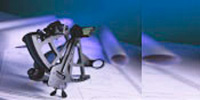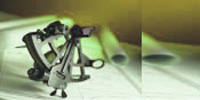Photography and the law
From Wikipedia, the free encyclopedia
A "No Photography" sign, commonly placed in properties where the owner objects to or it is illegal to take photographs (though in some jurisdictions, this is not a legal requirement).
Photography tends to be protected by the law through copyright and moral rights. Photography tends to be restricted by the law through miscellaneous criminal offences. Publishing certain photographs can be restricted by privacy law. Photography of certain subject matter can be generally restricted in the interests of public morality and the protection of children.
Contents [hide]
1 United Kingdom
1.1 Legal restrictions on photography
1.2 Copyright
1.2.1 Infringement
1.3 Photography and privacy
2 United States
2.1 Public property
2.2 Private property
2.3 Privacy issues
2.4 Commercial photography
2.5 Other issues
3 Other countries
3.1 Sudan
3.2 India
4 See also
5 References
6 External links
[edit]United Kingdom
[edit]Legal restrictions on photography
Amsterdam, Holland.
In general under the law of the United Kingdom one cannot prevent photography of private property from a public place, and in general the right to take photographs on private land upon which permission has been obtained is similarly unrestricted. However a landowner is permitted to impose any conditions they wish upon entry to a property, such as forbidding or restricting photography. Two public locations in the UK, Trafalgar Square and Parliament Square have a specific provision against photography for commercial purposes,[1] and permission is needed to photograph or film for commercial purposes in the Royal Parks.[2]
Persistent or aggressive photography of a single individual may come under the legal definition of harassment.[3]
It is a criminal offence (contempt) to take a photograph in any court of any person, being a judge of the court or a juror or a witness in or a party to any proceedings before the court, whether civil or criminal, or to publish such a photograph. This includes photographs taken in a court building, or the precincts of the court.[4] Taking a photograph in a court can be seen as a serious offence, leading to a prison sentence.[5][6] The prohibition on taking photographs in the precincts is vague. It was designed to prevent the undermining of the dignity of the court, through the exploitation of images in low brow 'picture papers'.[7]
Photography of certain subject matter is restricted in the United Kingdom. In particular, the Protection of Children Act 1978 restricts making child pornography or what looks like child pornography.
It is an offence under the Counter-Terrorism Act 2008 to publish or communicate a photograph of a constable (not including PCSOs), a member of the armed forces, or a member of the security services, which is of a kind likely to be useful to a person committing or preparing an act of terrorism. There is a defence of acting with a reasonable excuse, however the onus of proof is on the defence, under section 58A of the Terrorism Act 2000. A PCSO cited Section 44 of the Terrorism Act 2000 to prevent a member of the public photographing them. Section 44 actually concerns stop and search powers.[8]
It is also an offence under section 58 of the Terrorism Act 2000 to take a photograph of a kind likely to be useful to a person committing or preparing an act of terrorism, or possessing such a photograph. There is an identical defence of reasonable excuse. This offence (and possibly, but not necessarily the s.58A offence) covers only a photograph as described in s.2(3)(b) of the Terrorism Act 2006. As such, it must be of a kind likely to provide practical assistance to a person committing or preparing an act of terrorism. Whether the photograph in question is such is a matter for a jury, which is not required to look at the surrounding circumstances. The photograph must contain information of such a nature as to raise a reasonable suspicion that it was intended to be used to assist in the preparation or commission of an act of terrorism. It must call for an explanation. A photograph which is innocuous on its face will not fall foul of the provision if the prosecution adduces evidence that it was intended to be used for the purpose of committing or preparing a terrorist act. The defence may prove a reasonable excuse simply by showing that the photograph is possessed for a purpose other than to assist in the commission or preparation of an act of terrorism, even if the purpose of possession is otherwise unlawful.[9]
[edit]Copyright
This section may contain original research. Please improve it by verifying the claims made and adding references. Statements consisting only of original research may be removed. More details may be available on the talk page. (June 2010)
Copyright can subsist in an original photograph, i.e. a recording of light or other radiation on any medium on which an image is produced or from which an image by any means be produced, and which is not part of a film.[10] Whilst photographs are classified as artistic works, the subsistence of copyright does not depend on artistic merit.[10] The owner of the copyright in the photograph is the photographer - the person who creates it,[11] by default.[12] However, where a photograph is taken by an employee in the course of employment, the first owner of the copyright is the employer, unless there is an agreement to the contrary.[13]
Copyright which subsists in a photograph protects not merely the photographer from direct copying of his work, but also from indirect copying to reproduce his work, where a substantial part of his work has been copied.
Copyright in a photograph lasts for 70 years from the end of the year in which the photographer dies.[14] A consequence of this lengthy period of existence of the copyright is that many family photographs which have no market value, but significant emotional value, remain subject to copyright, even when the original photographer cannot be traced, has given up photography, or died. In the absence of a licence, it will be an infringement of copyright in the photographs to copy them.[15] As such, scanning old family photographs to a digital file for personal use is prima facie an infringement of copyright.
Certain photographs may not be protected by copyright. Section 171(3) of the Copyright, Designs and Patents Act 1988 gives courts jurisdiction to refrain from enforcing the copyright which subsists in works on the grounds of public interest.
[edit]Infringement
Infringement of the copyright which subsists in a photograph can be performed though copying the photograph. This is because the owner of the copyright in the photograph has the exclusive right to copy the photograph.[16] For there to be infringement of the copyright in a photograph, there must be copying of a substantial part of the photograph.[17] A photograph can also be a mechanism of infringement of the copyright which subsists in another work. For example, a photograph which copies a substantial part of an artistic work, such as a sculpture, painting, architectural work (building) or another photograph (without permission) would infringe the copyright which subsists in those works.
The Radcliffe Camera, built 1737-1749, holds books from the Bodleian Library
However, the subject matter of a photograph is not necessarily subject to an independent copyright. For example, in the Creation Records case,[18][19] a photographer, attempting to create a photograph for an album cover, set up an elaborate and artificial scene. A photographer from a newspaper covertly photographed the scene and published it in the newspaper. The court held that the newspaper photographer did not infringe the official photographer's copyright. Copyright did not subsist in the scene itself - it was too temporary to be a collage, and could not be categorised as any other form of artistic work.
The protection of photographs in this manner has been criticised on two grounds.[20] Firstly, it is argued that photographs should not be protected as artistic works, but should instead be protected in a manner similar to that of sound recordings and films. In other words, copyright should not protect the subject matter of a photograph as a matter of course as a consequence of a photograph being taken.[21] It is argued that protection of photographs as artistic works is anomalous, in that photography is ultimately a medium of reproduction, rather than creation. As such, it is more similar to a film, or sound recording than a painting or sculpture. Some photographers share this view. For example, Michael Reichmann describes photography as an art of disclosure, as opposed to an art of inclusion.[22] Secondly, it is argued that the protection of photographs as artistic works leads to bizarre results.[20] Subject matter is protected irrespective of the artistic merit of a photograph. The subject matter of a photograph is protected even when it is not deserving of protection. For copyright to subsist in photographs as artistic works, the photographs must be original, since the English test for originality is based on skill, labour and judgement.[20] That said, it is possible that the threshold of originality is very low. Essentially, by this, Arnold is arguing that whilst the subject matter of some photographs may deserve protection, it is inappropriate for the law the presume that the subject matter of all photographs is deserving of protection.
It is possible to say with a high degree of confidence that photographs of three-dimensional objects, including artistic works, will be treated by a court as themselves original artistic works, and as such, will be subject to copyright.[23] It is likely that a photograph (including a scan - digital scanning counts as photography for the purposes of the Copyright Designs and Patents Act 1988) of a two dimensional artistic work, such as another photograph or a painting will also be subject to copyright if a significant amount of skill, labour and judgement went into its creation.[24]
[edit]Photography and privacy
A right to privacy exists in the UK law, as a consequence of the incorporation of the European Convention on Human Rights into domestic law through the Human Rights Act 1998. This can result in restrictions on the publication of photography.[25][26][27][28][29]
Whether this right is caused by horizontal effect of the Human Rights Act 1998 or is judicially created is a matter of some controversy.[30] The right to privacy is protected by Article 8 of the convention. In the context of photography, it stands at odds to the Article 10 right of freedom of expression. As such, courts will consider the public interest in balancing the rights through the legal test of proportionality.[27]
A very limited statutory right to privacy exists in the Copyright Designs and Patents Act 1988. This right is held, for example, by someone who hires a photographer to photograph their wedding. The commissioner[31], irrespective of any copyright which he does or does not hold in the photograph[31] of a photograph which was commissioned for private and domestic purposes, where copyright subsists in the photograph, has the right not to have copies of the work issued to the public,[32] the work exhibited in public[33] or the work communicated to the public.[34] However, this right will not be infringed if the rightholder gives permission. It will not be infringed if the photograph is incidentally included in an artistic work, film, or broadcast.[35]
[edit]United States
Local, state, and national laws may exist pertaining to photographing or videotaping. Laws that are present may vary from one jurisdiction to the next, and may be stricter in some places and more lenient in others, so it is important to know the laws present in one's location. Typical laws in the United States are as follows:
[edit]Public property
It is generally legal to photograph or videotape anything and anyone on any public property, with some exceptions[36].
Taking a photograph while on an airplane is banned in many places, and many mass transit systems prohibit taking photographs or videos while on board buses or trains or inside of stations. (It is unknown whether such prohibitions are legal, due to transit systems in the United States often being considered public places.) Photography is against Port Authority rules in New York and New Jersey's PATH Train system.[37] Photography and videography are also prohibited in the U.S. Capitol, in courthouses, and in government buildings housing classified information. Bringing a camera phone into one of these buildings is not permitted either.[citation needed]
Photographing or videotaping a tourist attraction, whether publicly or privately owned, is generally considered legal, unless explicitly prohibited by posted signs.
[edit]Private property
Photography may be prohibited and/or restricted within an area of property by the property owner[36]. At the same time, a property owner generally cannot restrict the photographing of their property by individuals who are not located within the bounds of the property[36].
In order to film on someone else's property, permission must be received from the owner.
Photographing of privately-owned property that is generally open to the public (i.e. retail) is permitted unless explicitly prohibited by posted signs.
Some jurisdictions have laws regarding filming while in a hospital or health care facility. Where permitted, such filming may be useful in gathering evidence in cases of abuse, neglect, or malpractice.
[edit]Privacy issues
Further information: Privacy laws of the United States
Photographing private property from within the public domain is legal, with the exception of an area that is generally regarded as private, such as a bedroom, bathroom, or hotel room[36]. In some states, there is no definition of "private," in which case there is a general expectation of privacy. Should the subjects not attempt to conceal their private affairs, their actions immediately become public to a photographer using an average lens or video camera.
Many places have laws prohibiting photographing private areas under a person's clothing without that person's permission. This also applies to any filming of another within a public restroom or locker room. Some jurisdictions have completely banned the use of a camera phone within a restroom or locker room in order to prevent this. It is expected that all 50 states will eventually have laws pertaining to surreptitiously filming a person's genitalia. The United States enacted the Video Voyeurism Prevention Act of 2004 to punish those who intentionally capture an individual's private areas without consent, when the person knew the subject had an expectation of privacy.[38] Additionally, state laws have been passed addressing the issue as well.[39]
[edit]Commercial photography
In certain locations, such as California state parks, commercial photography is subject to insurance requirements and usually also requires a permit[40]. In places such as the city of Hermosa Beach in California, commercial photography on both public property and private property is subject to permit regulations and possibly also insurance requirements[41].
At the Chesapeake and Ohio Canal National Historical Park, commercial photography requires a permit under certain circumstances[42]. For photography that involves the advertising of a commercial product or service, or photography that involves sets or props or models, a permit is required[42]. In addition, if the photography has aspects that may be disruptive to others, such as additional equipment or a significant number of personnel or the use of public areas for more than four hours, it is necessary to obtain a permit[42]. If a photographer or related personnel need to access an area during a time when the area is normally closed, or if access to a restricted area is involved, the photography requires a permit[42]. For commercial portrait photographers, there is a streamlined process for photography permits[42] In the case of National Park system units, commercial filming and/or audio recording requires a permit and liability insurance[43]. Still photography is sometimes subject to the permit and insurance requirements[43].
If a photograph shows private property in such a manner that a viewer of the photograph can identify the owner of the property, the ASMP (American Society of Media Photographers, Inc.) recommends that a property release should be used if the photograph is to be used for advertising and/or commercial purposes.[44] According to the ASMP, a property release may be a requirement in such a situation[44].
[edit]Other issues
Photographing accident scenes and law enforcement activities is usually legal[36]. At the same time, one must not hinder the operations of law enforcement, medical, emergency, or security personnel by filming.
Any filming with the intent of doing unlawful harm against a subject may be a violation of the law in itself.
[edit]Other countries
Reactions to photography differ between societies, and even where restrictions on photography are not covered by statute, code, or judicial precedent, there may be resistance to the taking of photographs by individuals or groups. The breach of the social norms can result in opprobrium, coercion, danger, and violence, and as such should be noted and respected.
[edit]Sudan
Travelers who wish to take any photographs must obtain a photography permit from the Government of Sudan, Ministry of Interior, Department of Aliens.[45]
[edit]India
A permit is required for aerial photography in India, which normally takes over a month to acquire.[46] Regulations apply to land-based photography for certain locations.[46]
[edit]See also
Image copyright (Germany)
Legality of recording by civilians
Panoramafreiheit
Public domain
Model release
Google Street View privacy concerns
Category:Places with restrictions on photography
[edit]References
^ "Trafalgar Square and Parliament Square Garden (Amendment No: 1) Byelaws 2002". Greater London Authority Act 1999, Section 385(1). Greater London Authority. 2002. Retrieved 2009-06-20.
^ "Filming in The Royal Parks". The Royal Parks. Retrieved 2009-06-20.
^ Linda Macpherson LL.B, Dip.L.P., LL.M - The UK Photographers Rights Guide
^ Criminal Justice Act 1925 (c.86) s.41
^ Mobile court photo sentence upheld - http://news.bbc.co.uk/1/hi/wales/north_east/3686557.stm
^ Regina v Vincent D No. 2004/01739/A7 [2004] EWCA Crim 1271
^ Rubin, G "Seddon, Dell and rock n' roll: investigating alleged breaches of the ban on publishing photographs taken within courts or their precincts, 1925-1967" Crim. L.R. 874
^ Cosgrove, Sarah (14 April 2009). "Man questioned under terrorism law after taking picture of police car in park". Enfield Independent. Retrieved 2009-04-22.
^ R v K [2008] EWCA Crim 185
^ a b Copyright, Designs and Patents Act 1988 s 1(1)(a) and s 4(2)
^ Copyright, Designs and Patents Act 1988 s 9(1)
^ Copyright, Designs and Patents Act 1988 s 11(1)
^ Copyright, Designs and Patents Act 1988 s11(3)
^ Copyright, Designs and Patents Act 1988 s 12
^ Copyright, Designs and Patents Act 1988 s 16(2)
^ Copyright, Designs and Patents Act 1988 s 16(1)
^ Copyright, Designs and Patents Act 1988 s16(3)
^ Creation Records Ltd v News Group Newspapers Ltd [1997] EMLR 444 (Ch)
^ Lambert, Jane (2000-02). "Case Note: Creation Records Ltd. v News Group Newspapers". IP/IT-Update. NIPC. Retrieved 2009-05-09.
^ a b c Richard Arnold, “Copyright in Photographs: A Case for Reform” [2005] European Intellectual Property Review 303
^ Illustrated in the Norowzian v Arks case. In this case, it was noted that the copyright in a film would be infringed only though photographic copying of a substantial part, as opposed to mere recreation of the film. It was, however, also held that that a film could be protected by copyright both as a film and as a dramatic work, provided, of course, that it fulfilled the requirements of protection of a dramatic work, on the facts. The claimant, was eventually unsuccessful. It was held that whilst the film in question in fact had copyright subsist in it both as a film and as a dramatic work, this copyright was not infringed, because there was no copying of a substantial part.
^ "The Art of Photography". The Luminous Landscape. Retrieved 2009-05-09.
^ "Antiquesportfolio.com plc v Rodney Fitch & Co Ltd". Pinsent Masons. Retrieved 2009-05-09.
^ See Sawkins v Hyperion Records [2005] EWCA Civ 565 at [79]-[84]
^ Human Rights Act 1998 sections 2 & 3
^ Human Rights Act 1998 Schedule 1, Part 1, Article 8
^ a b Mosley v News Group Newspapers Ltd [2008] EWHC 1777 (QB)
^ Campbell v Mirror Group Newspapers Ltd [2004] UKHL 22
^ Murray v Express Newspapers Plc [2008] EWCA Civ 446
^ J. Morgan, ‘Privacy in the House of Lords, Again’ (2004), 120 Law Quarterly Review 563, 565
^ a b Copyright, Designs and Patents Act 1988 s 2
^ Copyright, Designs and Patents Act 1988 s 85(1)a
^ Copyright, Designs and Patents Act 1988 s 85(1)a Paragraph B
^ Copyright, Designs and Patents Act 1988 s 85(1)a Paragraph C
^ Copyright, Designs and Patents Act 1988 s 85(2)(a)
^ a b c d e Krages II, Bert P. "The Photographer's Right". Retrieved 2009-06-17.
^ Photography in New York City
^ "S. 1301 [108th]: Video Voyeurism Prevention Act of 2004". GovTrack.us. Retrieved 2009-02-27.
^ "Video Voyeurism Laws". The National Center for Victims of Crime. Retrieved 2009-05-27.
^ "Definition of Commercial Filming Projects". State of California. Retrieved 2009-03-03.
^ "Film Permit Policy and Application -- City of Hermosa Beach, CA.". City of Hermosa Beach. Retrieved 2009-03-03.
^ a b c d e "Chesapeake & Ohio Canal National Historical Park - Commercial Photography Information (U.S. National Park Service)". National Park Service. Retrieved 2009-05-27.
^ a b "NPS Digest- Commercial Filming and Still Photography Permits". National Park Service. Retrieved 2009-05-27.
^ a b "ASMP: Property and Model Release Tutorial". American Society of Media Photographers, Inc.. Retrieved 2009-03-09.
^ US State Dept. - Travel Information - Sudan
^ a b "Reel India Pictures". www.reelindiapictures.com. Retrieved 2009-03-03.
[edit]External links
Bert P. Krages Attorney at Law Photographer's Rights Page Information about photographers' rights in the US
Canadian laws with regard to photography
Digital Rights Ireland » Photographer’s Rights
UK Photographers Rights
Australian street photography legal issues
Copyright Registration will cost - $ 20
Public offer - read carefully before registration!
1. The Parties of this Public Offer (paid service agreement), hereinafter referred to as the “Agreement” or “Offer”, are, as follows:




